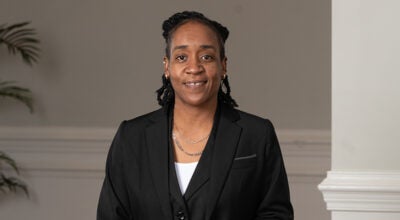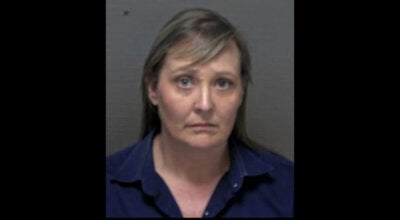Opinions differ over student walk-out
Published 12:30 pm Wednesday, April 11, 2018
Seventeen minutes. For 17 lives.
It seemed like a fitting tribute to those who died in the Florida school shooting. And so students joined a nationwide movement last month and walked out of their classrooms for 17 minutes, including some students at Currituck County High School and Currituck County Middle School.
Not everyone participated in the student-organized walk-outs. And not everyone agreed with the students’ right to participate.
The topic came up at the Board of Education’s regular meeting that was held at the end of March because of the Easter/spring break in the first week of April.
Board member Will Crodick contended that according to the movement’s national website, the protest was about gun control and not about the 17 lives.
Crodick said that there is policy in place about consequences to students who disrupt the classroom, which he contended the students who walked out did, and that letting the students make up the rules, “I equate that to chaos.”
If those students killed had been Currituck students, would you still want the students who walked out punished, board chairman Dr. Bill Dobney asked Crodick.
Crodick said he wants a policy about what to do if it happens again and that students could have a rally every week about other things, like not being able to use the restroom when they want to. He said students should not be disrupting the educational process and there needs to be rules and order.
One CCHS student said that her classroom was disrupted and that students made a ruckus when they left, some for more than 17 minutes, and that the majority did not walk out but those who did are free from punishment.
Instead of during class time, she suggested the protest should have taken place before or after school or during lunch, and the goal seemed to be disrupting the learning environment.
The student, who spoke during public comment, also objected to teachers posting their political opinions on signs that cover the white boards where lessons should be written instead.
The student’s mother also spoke during public comment concerned because parents were not informed about the walk-out and she got no information from the school when she called about it.
Board member Janet Rose said she thought the parents should have been notified the day before about the possibility of a walk-out so they could talk to their children beforehand, but understood it was not a school-sponsored event so the district did not notify parents. Rose said she was proud of the students, those that walked out and those that did not.
In talking to the board’s attorney and state and national education-based organizations, school superintendent Mark Stefanik said that the walk-out was not a school sponsored event, it was a student-led activity, and as-such the board’s role was to make sure the students who participated remained safe.
The superintendent explained that no visitors were allowed in the school that morning, law enforcement was on hand, staff also helped secure the building and the football field where the students gathered.
Stefanik said that of 16 area school districts, two did not have students take part in the national walk-out, and the others handled the situation as Currituck did, ensuring students’ safety. One district did assess the participating students with an unexcused absence but allowed them to make up the time.
When chairman Dobney asked if there was any “chaos,” Stefanik, who was at CCHS and CCMS that morning, said none that he heard about, and added that walking out of the classroom is not an action that calls for suspension.
CCHS principal Juvanda Crutch said that she was at the football field for most of the observance, and that students talked about the lives lost and they prayed, but she did not hear anyone talk about gun reform. The students then returned to class and continued on with the school day without any reported disturbance.
Chairman Dobney added that students can’t be punished for praying.
Crodick said that teachers were stationed around the building and extra deputies were at the school, so school personnel knew the walk-out was going to happen, but there were no consequences for those students and that the board was setting precedent by not acting.
Crutch said they knew of the possibility and that it was a national event. Because students were out in the open, extra security precautions were taken.
Crodick suggested that students have a different level of First Amendment rights when in school or at a school function. However, Dobney disagreed, citing a Supreme Court ruling that said otherwise.
“They are the ones being shot at,” commented board member Dwan Craft, adding the students need a voice in the issue.
A student who took part in organizing the event at CCHS said during public comment that about 180 students participated, but since then, others have been using social media to attack and belittle her and other participants. She suggested that whether students walked out or didn’t walk out, they should be able to listen to one another’s opinions in a respectful manner.
Student board members Tyler Little and Colin Coffie said that class breaks at College of the Albemarle were scheduled so that students could participate in the walk-out without missing any class time.
Little asked if there was any similar event previously, and chairman Dobney responded that he was superintendent when the shootings at Columbine occurred and that while there was no national walk-out then, security was increased at Currituck schools for several months afterward. Rose said she participated in two local student walk-outs when she was in ninth and tenth grade.
Student board member Jenna Akers said that she did not participate in the walk-out but that if those students who exercised their First Amendment rights are to be punished, she would take that same punishment.





